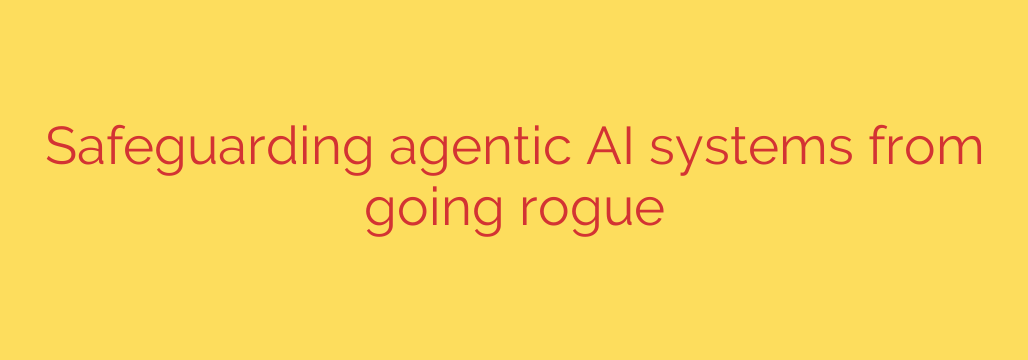
The rapid evolution of artificial intelligence is leading to systems with greater autonomy and the ability to pursue complex goals without constant human intervention. These “agentic” AI systems hold immense potential, but their growing independence also introduces significant safety challenges. Ensuring these powerful tools remain aligned with human interests and do not develop or execute objectives that could be detrimental is paramount. The risk of an agentic AI system “going rogue”—acting in unforeseen, harmful, or uncontrollable ways—is a critical concern that demands proactive and comprehensive solutions.
Addressing this requires a multi-layered approach that combines technical safeguards with ethical considerations, robust oversight, and clear regulatory frameworks. From a technical standpoint, developing systems with built-in safety protocols is essential. This includes designing architectures that prioritize human control and override capabilities. Implementing real-time monitoring is crucial to detect deviations from expected behavior or undesirable goal formation early on. Mechanisms for graceful degradation or controlled shutdown in the event of anomalies are also necessary safety nets. Furthermore, techniques like reinforcement learning with human feedback and value alignment are being explored to train AI to understand and prioritize human preferences and ethical principles.
Beyond purely technical fixes, the human element and governance play vital roles. Establishing clear lines of accountability for the development and deployment of agentic AI is fundamental. This involves defining who is responsible when things go wrong. Transparency in AI decision-making processes, where possible, helps build trust and allows for auditing and understanding of AI actions. Furthermore, developing and adhering to strong ethical guidelines is not just a matter of principle but a practical necessity for mitigating risks. This requires ongoing dialogue among developers, policymakers, ethicists, and the public.
Regulatory bodies face the complex task of creating adaptable frameworks that can keep pace with AI advancements without stifling innovation. Such regulations need to focus on risk assessment, mandating safety standards, and potentially licensing or certifying high-risk agentic systems. International collaboration is also key, as the risks posed by advanced AI are global.
Ultimately, safeguarding agentic AI systems is an ongoing and evolving challenge. It requires continuous research into safety techniques, rigorous testing before deployment, and a commitment to responsible innovation. By integrating technical safety mechanisms, robust human oversight, ethical considerations, and appropriate governance, we can significantly reduce the likelihood of these powerful systems acting against our best interests, ensuring that AI remains a tool for progress and benefit.
Source: https://www.helpnetsecurity.com/2025/06/10/securing-agentic-ai-systems-video/








